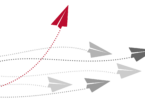Aiken, S.C. – Scientists studying diamondback terrapins, a type of salt-marsh turtle found along the eastern coast of the United States, have documented a pattern of decline again this year in the South. Scientists from Davidson College and the University of Georgia Savannah River Ecology Laboratory (SREL) conducted two surveys this summer at Kiawah Island, S.C.
Whit Gibbons of SREL began the survey at Kiawah in the early 1980s and returns each year with scientists and students. As surveys in recent years have shown significant declines in the numbers of turtles the researchers have found, this year Mike Dorcas of Davidson returned for a second survey.
“We are seeing the same pattern of decline in this species as we have documented in recent years,” said Dorcas. “Our data are showing that the characteristics of the decline are consistent with mortality due to crab-trapping. In other words, we continue to find larger turtles, more females, and not the smaller males and young turtles that are easily admitted into crab traps.”
The study involves a labor-intensive method called seining that requires a number of people to drag a net through the entire width of a marsh. Animals other than the diamondback terrapins are immediately tossed back into the water. The captured turtles are taken back with the scientists overnight so that they can be documented. Each receives a mark on its shell that indicates when it was last caught. Records are kept so the scientists can see where each is caught each time. Unmarked turtles are given marks and previously marked turtles are noted in the logs kept. All turtles are returned to the spots where they were captured. This is the only study of its type that has data from two decades, according to Dorcas.
 |
Gibbons noted that “because of the intensive physical effort necessary to capture the terrapins, we have been assisted by numerous students and other volunteers over the years. We would not be able to carry out this project without the aid of the Kiawah Island community who provide accommodations for us and permit access to docks and other facilities. Of course, everyone benefits when research on an attractive native species like the diamondback terrapin could possibly lead to its continued existence in the salt marsh.”
A positive sign, despite the decline, was the discovery of five young turtles, never captured before. While five is not statistically significant, according to Dorcas, it may be a sign that the bi-catch exclusion devices some crab trappers use are having an effect. Still, the predominance of large females found portends ill for the species, said Dorcas.
“The life history of these turtles is such that big females have babies. Where are the babies? And what happens when the females eventually die?”
Dorcas and others are developing a “rapid assessment” tool from the Kiawah data that can be used in other areas to assess the danger to diamondback terrapins without the labor-intensive study used at Kiawah. This computer model feeds in numbers based on an actual head-count of turtles. Using data collected over the last 20-plus years, scientists can get a rough estimate of the population in an area. This will help wildlife management of the species, according to Dorcas.
##







